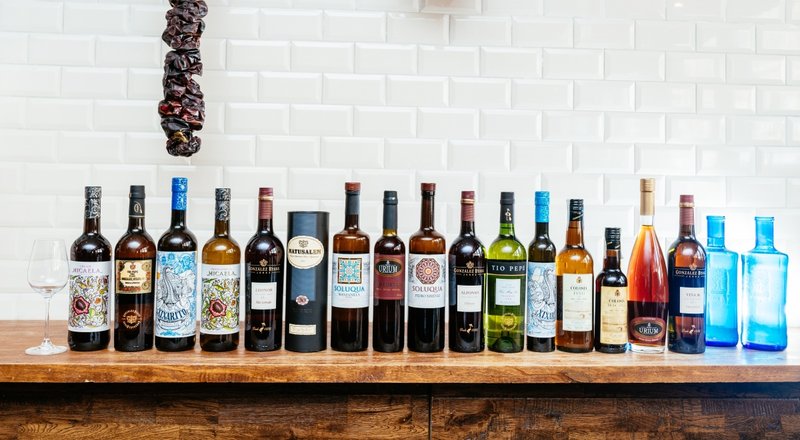Call up your best friends

Sherry is a most unusual type of wine, subject to complex production processes and unique natural influences that produce some of the most extraordinary wines in the world. In my opinion, Sherries (and any great wine) must be ideally enjoyed in good company and with fine food. If you are planning to serve an array of wines from the beautiful region of Jerez, then you should invite those whose friendship you value most highly – a good number of guests for a wine tasting is between 6 and 12, ideally with a similar level of knowledge about wine. Challenge yourself to become a great host and deepen your friendships, all framed in a one-of-a-kind celebration.
Deciding on the wine selection
The vast diversity of Sherry styles produced ensures that you can find a wine to suit every occasion and type of food. For this reason, I would suggest obtaining a widely varied assortment to sample during your wine-tasting. This will allow you to appreciate, as a group, the huge differences between the wines that coexist under this very unusual appellation: a Manzanilla, a Fino, an Amontillado, an Oloroso, a Palo Cortado and a sweet version, either Cream or Pedro Ximénez (PX). Once you’re more familiar with the different profiles, you can then decide to delve deeper into a more specific type of wine; for example, a tasting of only Finos - of varying age, producer, subzone, etc. Another good excuse for setting up more gatherings! Note that this southern Spanish region referred to as the “Sherry Triangle,” offers a huge range of wines that may fall between the main above-mentioned categories, in terms of grade of oxidation and sweetness. You’re just getting started!
Getting the wines
(and some quality information about them)

Making sure that you acquire the wines from a reliable source is key. Sadly, Sherry Wines aren’t (yet) the type of wine that flies off the shelves of your local wine store. Global consumption data tells us that most people are still not fully aware of the magical character of these wines, made from extended ageing processes and with a remarkable personality. Still, devoted Sherry lovers all over the world have for many years been sharing their passion with their friends, often wondering how come these unparalleled wines are not more popular. That said, no one wants to drink a bottle of wine that has been sitting on a warm shelf for years, so turnover is important. Ask the specialized Sherry wine import companies about retailers near you with regular sales. Do a little research and collect some handy background information on the wines so you feel prepared for the occasion.
Storing the wines yourself
Alright: let’s not jeopardize the countless, painstaking processes undertaken by dozens of people over long periods of time in order to produce these Sherries and get them to you. You have got the wines and they look awesome. Sherries are commonly sold in several volume formats: 375ml, 500ml or 750ml (magnums are true “unicorn” bottles). Note that screw-capped bottles are not a sign of a low-quality product. The labels, some of which are extremely beautiful, will give you useful details on the producer, style of wine, who the distributor is and the level of alcohol (remember these are fortified wines). Don’t get mad looking for the vintage, as most of the wines are blended in the solera system. This consists of the precious liquid being regularly transferred from barrel to barrel, by row from top to bottom, and the oldest wine in the system is in some proportion taken out and bottled. Occasionally, the solera’s debut year, the bottling date (or the actual vintage, if you happen to come by a rare añada wine), may be shown on labels. Handle the wines with care and store them in a cool, dark place (a cellar is ideal) or wine-storing device.
Read Part 2 | How to Host a Sherry Wine Tasting





